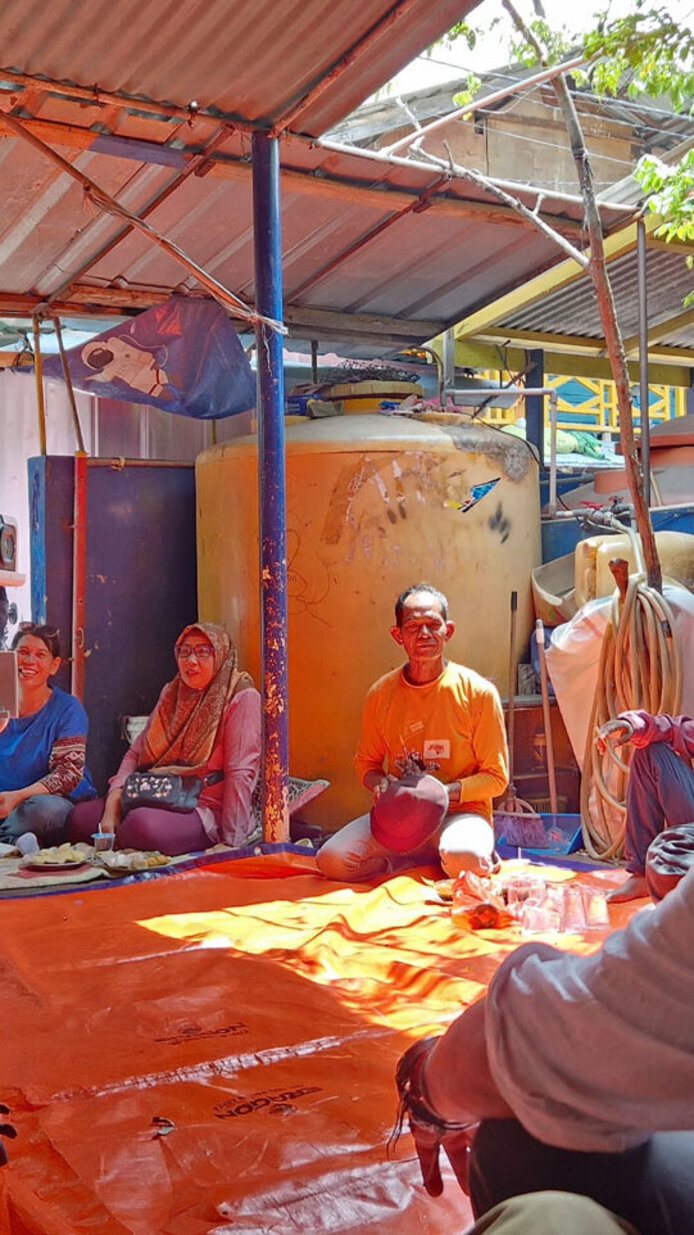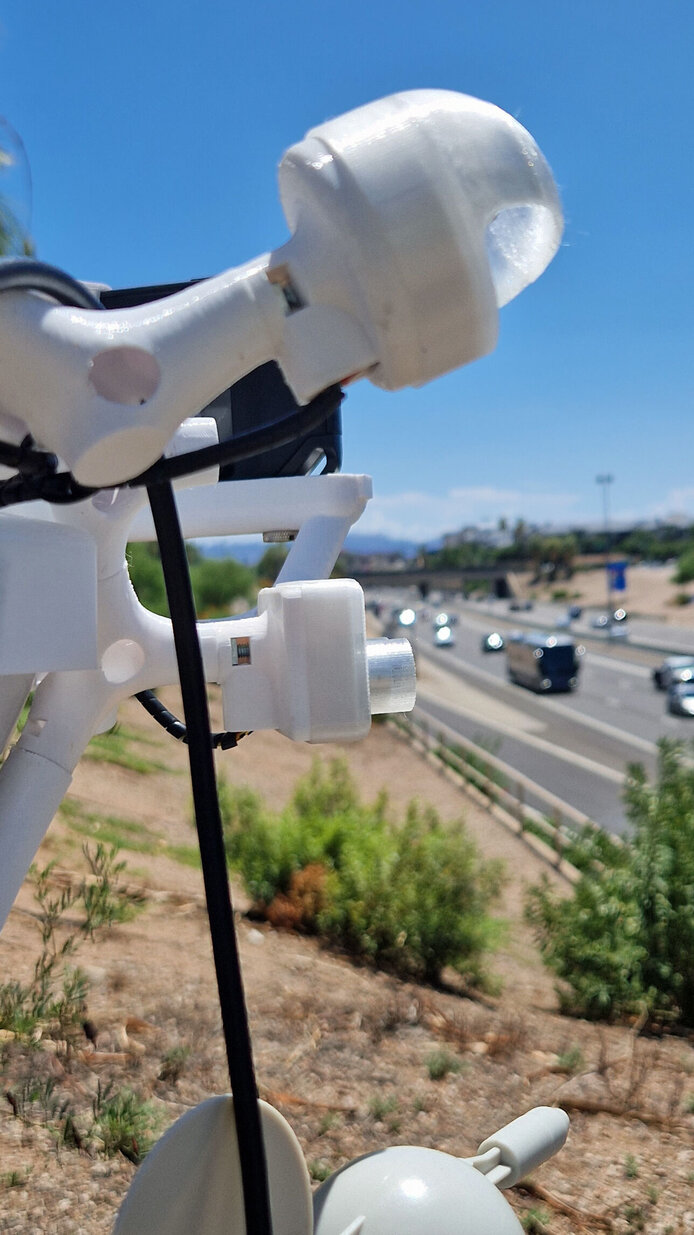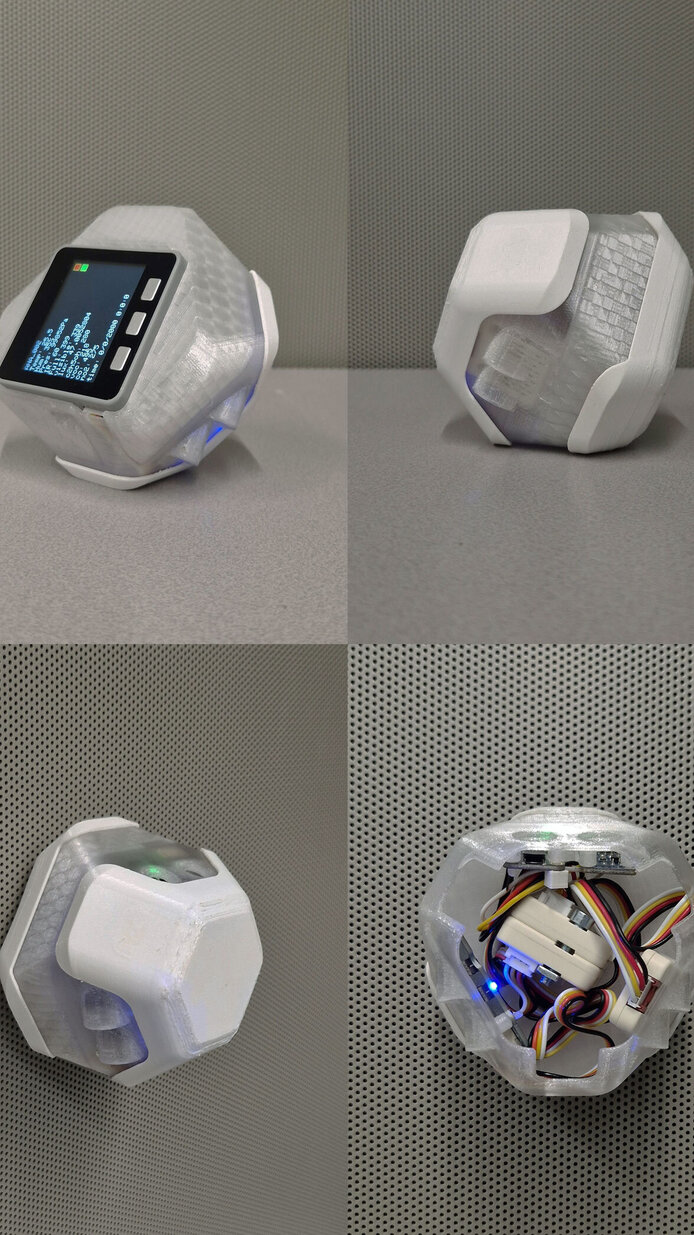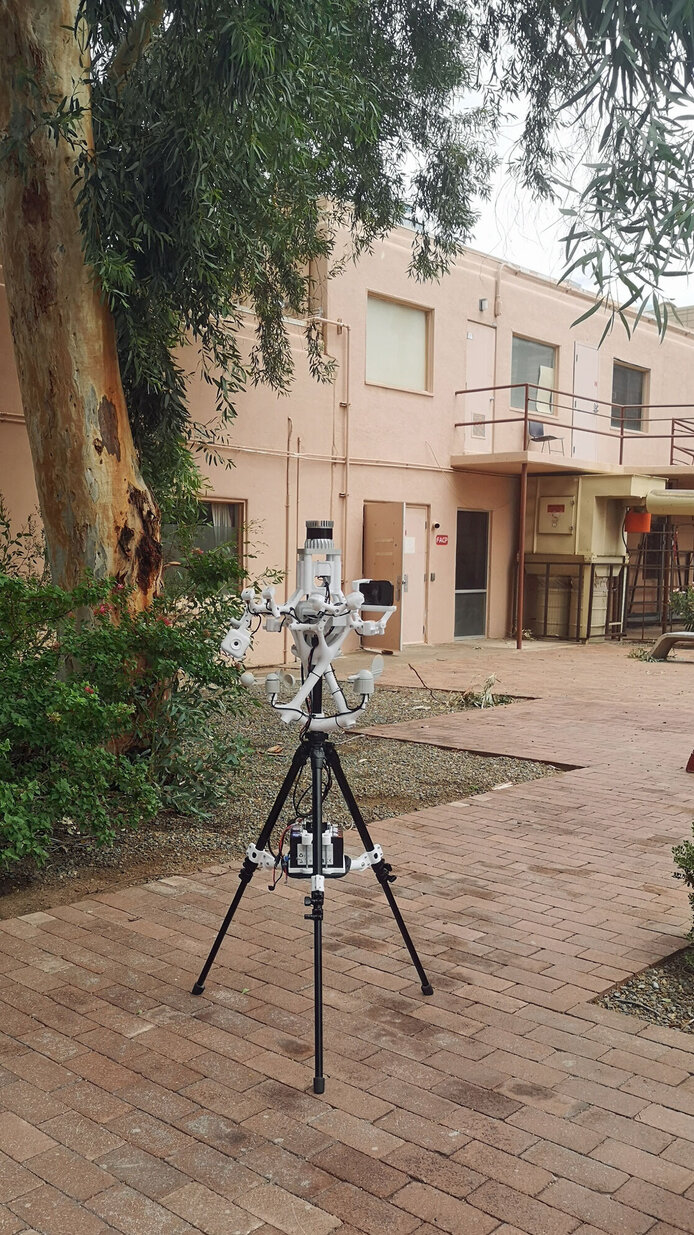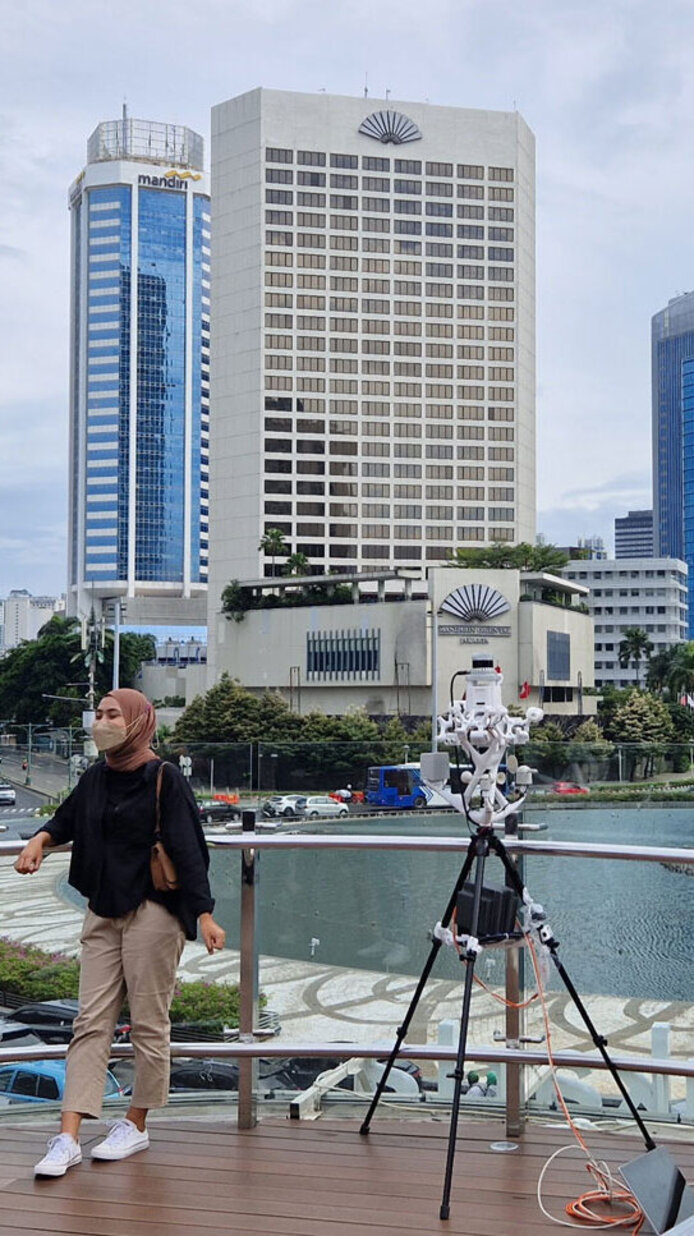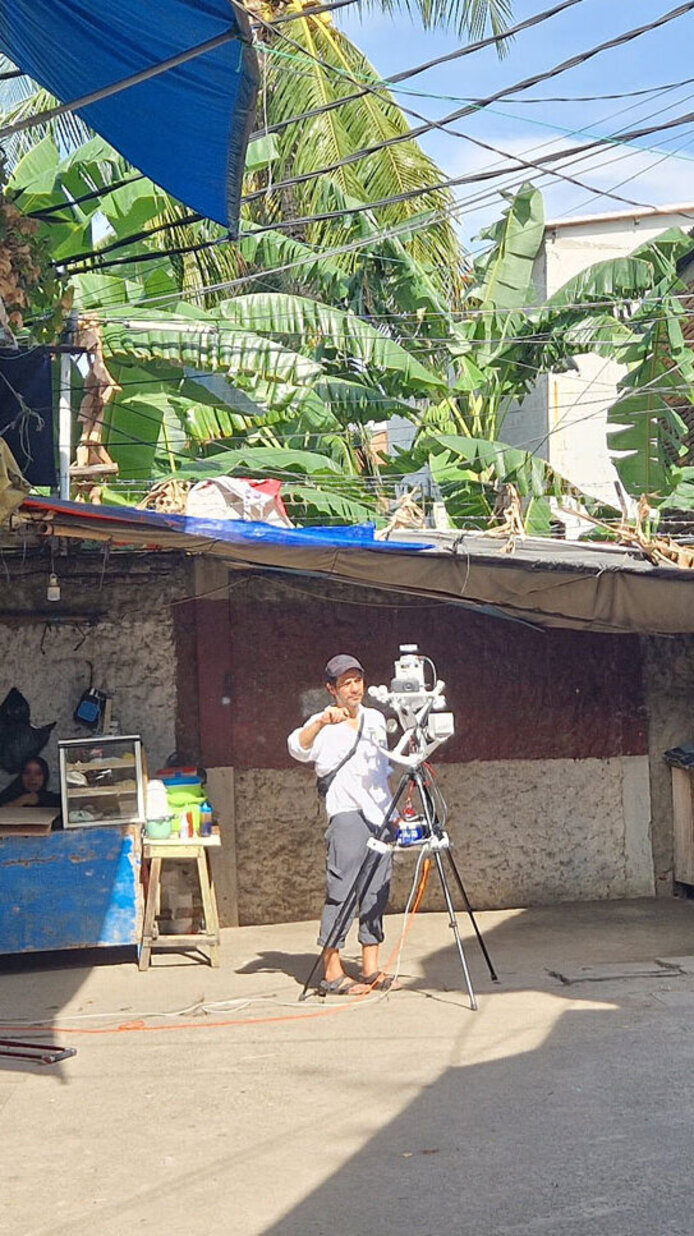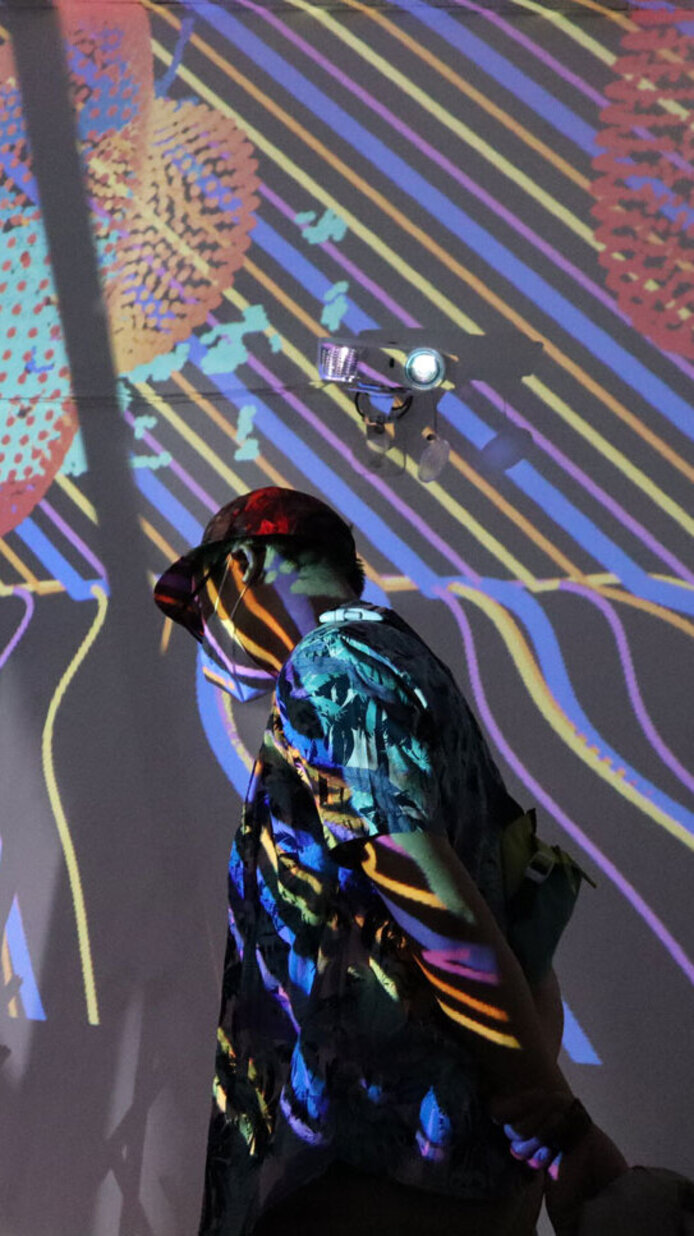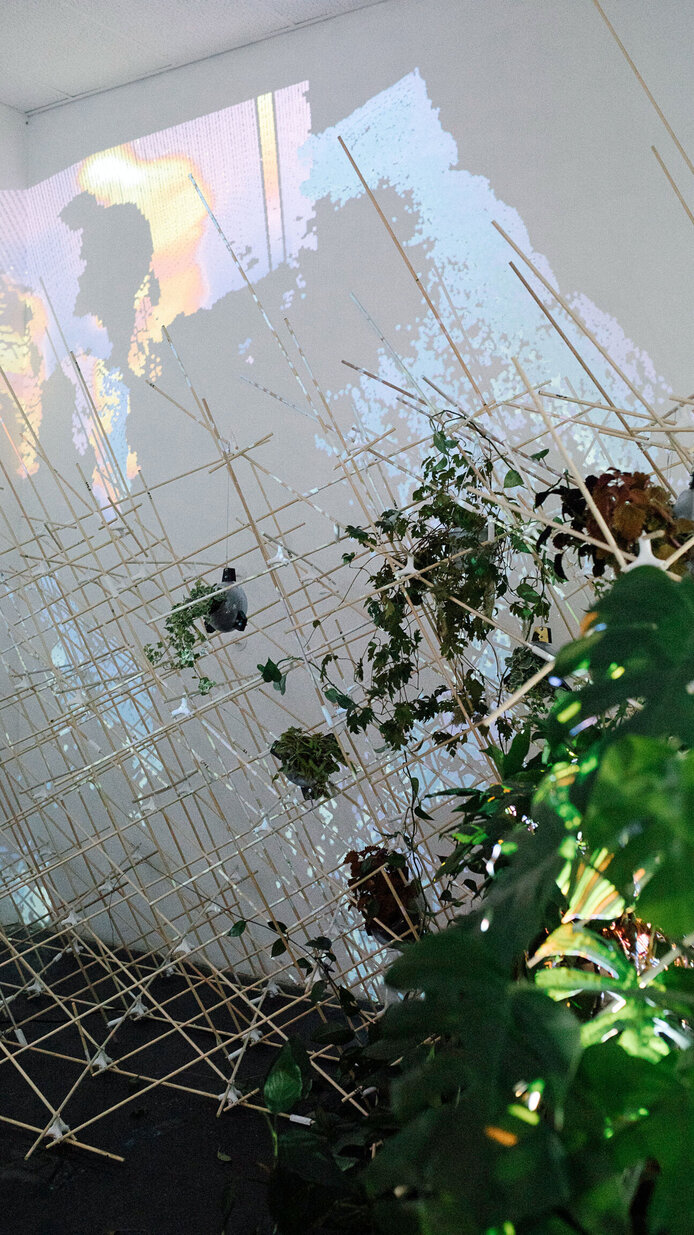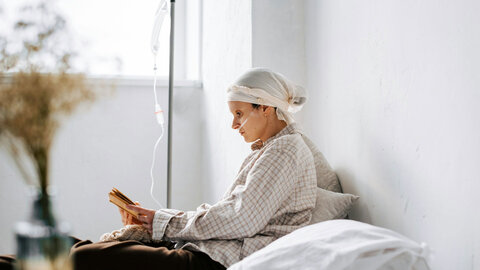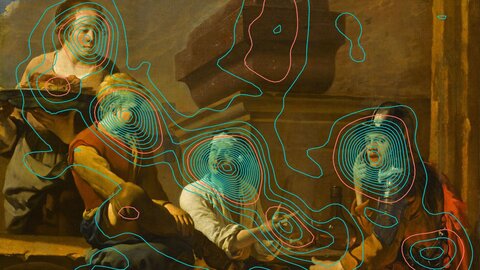Art helps to raise awareness about climate change
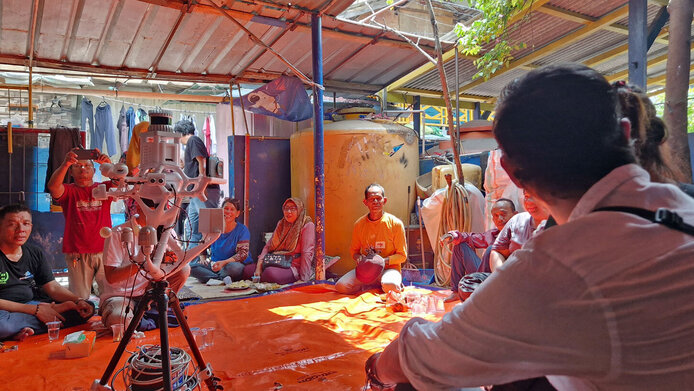
The climate crisis features unavoidably as a regular guest in daily news. We constantly hear and read many facts and figures about it. They involve buzzwords such as CO2 reduction or the Earth's radiation budget as impacted by the greenhouse effect. This is where the FWF-funded “Vibrant Fields” project comes in. Bernhard Sommer, head of research at the University of Applied Arts’ “Energy Design” department explains the rationale of the project: “Humidity and earth radiation are variables that are difficult for us humans to understand. This raises the question as to how we can learn from something that we can’t even perceive. Working at an arts university with overlaps to architecture, we want to help people to better understand what is happening in the climate crisis.”
Otto and Anna enhance our perception
Travel was out of the question at the start of the project, as it coincided with the beginning of the pandemic-related lockdowns. This is why the research team initially focused on developing the measurement methods and equipment. Zeynep Aksöz, who earned her doctorate at the University of Applied Arts and conducts research both there and at TU Vienna, describes their approach as follows: “We see the measuring devices as an extension of the human senses, which is why we gave them human names. They are called Otto and Anna. Things that we perceive unfiltered, via the skin for example, are measured and recorded as a data stream by the devices. To give you an example: I can sense that a place is hot and humid, but Otto or Anna can provide precise data about that situation.” Otto is designed as a stationary measuring device with numerous sensors that measure values such as fine dust, air pressure, temperature, wind velocity or the ambient oxygen content. The device called Anna, which has fewer sensors for environmental measurements, is much smaller so that it can easily be taken anywhere. Both devices use WiFi to transmit the measurement data to a server, where they are processed for further scientific evaluations. Otto and Anna were developed by the project members Mark Balzar, who works mainly in energy design, and Galo Moncayo Asan, who studied fine arts and architecture.
Interactive landscapes
The presentation of the data was staged as an interactive experience for visitors at various events, including the Vienna Design Week 2021, the Bratislava Design Week or an art conference in Phoenix, Arizona. Each exhibition had a different layout. While the images of the measurement data in real time resemble a moving landscape painting, they are not a video but the result of real-time interactions with the audience, explains Mark Balzar: “In Vienna, we created a hot zone where a wax sculpture changed with heat exposure. Another time we had a wet zone with plants. As the visitors moved around the exhibition spaces, they became part of the energetic footprint in the room, and they changed the landscapes. Instead of being told that the humidity was at 80 percent, the visitors experienced that for themselves.” Children were also offered some fun interaction with a thermal imaging camera at the Vienna Design Week, for example.
Another part of the project involved producing a record of history, as Galo Moncayo Asan explains: “In the past, people recorded memorable moments through paintings, then with photos and films. We do the same with Otto, but Otto produces a holistic record including additional data such as temperature, geometry or air particles. If localities were to disappear because of the climate crisis, we can at least preserve a comprehensive record of them.”
Urban planning and social policy
The project team focused on doing their measurements in places where the effects of the climate crisis are felt particularly strongly, namely in Phoenix, Arizona, at the hottest time of the year, in Jakarta during the rainy season and in extremely chilly Alaska. The team also wanted to learn from the architecture in these places and the experiences of the people there. In Phoenix, climatic conditions have deteriorated owing to the focus on vehicle mobility that urban development has pursued there since the 1950s. As a result, the social divides are now clearly visible: residential neighborhoods with lush green palm trees and gardens belong to the rich, who can afford water. In the poorer neighborhoods, the city administration recommends that people should do without plants, and landscape design consists of gray rocks and cacti.
In Jakarta, the team grasped the political value of environmental data, as Zeynep Aksöz reports: “Citizens affiliated with an NGO borrowed Otto to take measurements in four districts. These measurement data will be used in the upcoming elections to confront policy-makers with demands for crucial measures. In this way, our basic research has become applied as a means of becoming aware of the quality of one’s living environment and putting this awareness to proactive use.” This arts-based research project has just been completed, and Bernhard Sommer summarizes the team’s intentions: “With Vibrant Fields we are bringing landscape painting into the 21st century. A moment in a specific place at a specific time becomes interactive and can be saved as a record containing a wide variety of information. By combining art and architecture, we want to facilitate a different way of communicating scientific facts in urban planning and of harnessing them at the political level.”
The research team
Bernhard Sommer studied architecture at TU Wien, specializing in energy-efficient building. In 2008, he founded the Department of Energy Design under the direction of visiting professor Brian Cody at the Institute of Architecture at the University of Applied Arts Vienna, where he has been doing research and teaching ever since. In 2019, his architecture office, Exikon, was awarded the State Prize for Architecture and Sustainability.
The “Vibrant Fields” project was carried out by a team under the leadership of Sommer. The team members were the senior researchers Zeynep Aksöz and Mark Balzar as well as senior artist Galo Moncayo Asan – all of whom are trained architects with different specializations. The project received approx. EUR 380,000 in funding from the Austrian Science Fund FWF under its funding track for arts-based research, PEEK.
Project website: https://www.vibrantfields.net/
Publications & Contributions
Balzar M., Aksöz Z., Moncayo Asan G.: OTTO: A portable Urban Sensing Station to Survey Energetic Footprint of Urban Microclimates, 5th Conference on Computational Design and Robotic Fabrication (CDRF 2023) (in printing stage)
Sommer B., Pont U., Sommer-Nawara M., Moncayo G. : Energy Design: Gestaltung und Innovation in Bestandsgebäuden, in: Nabil. A. Fouad (Ed.), Bauphysik-Kalender 2023: Schwerpunkt: Nachhaltigkeit, 529–554, Ernst & Sohn 2023
Sommer B., Pont U., Moncayo G., Bauer P., Braun J. et al.: Recent progress of SPIDER: Aspects of subtractive approaches to existing building's performance improvement, in: Journal of Physics: Conference Series, Vol. 2069, 8th International Building Physics Conference (IBPC 2021) 25–27. August 2021, Copenhagen, Denmark
